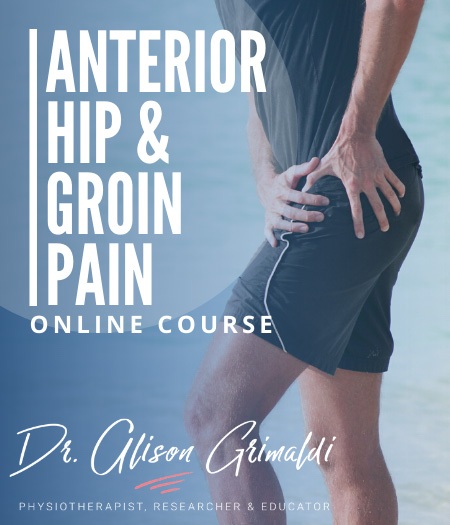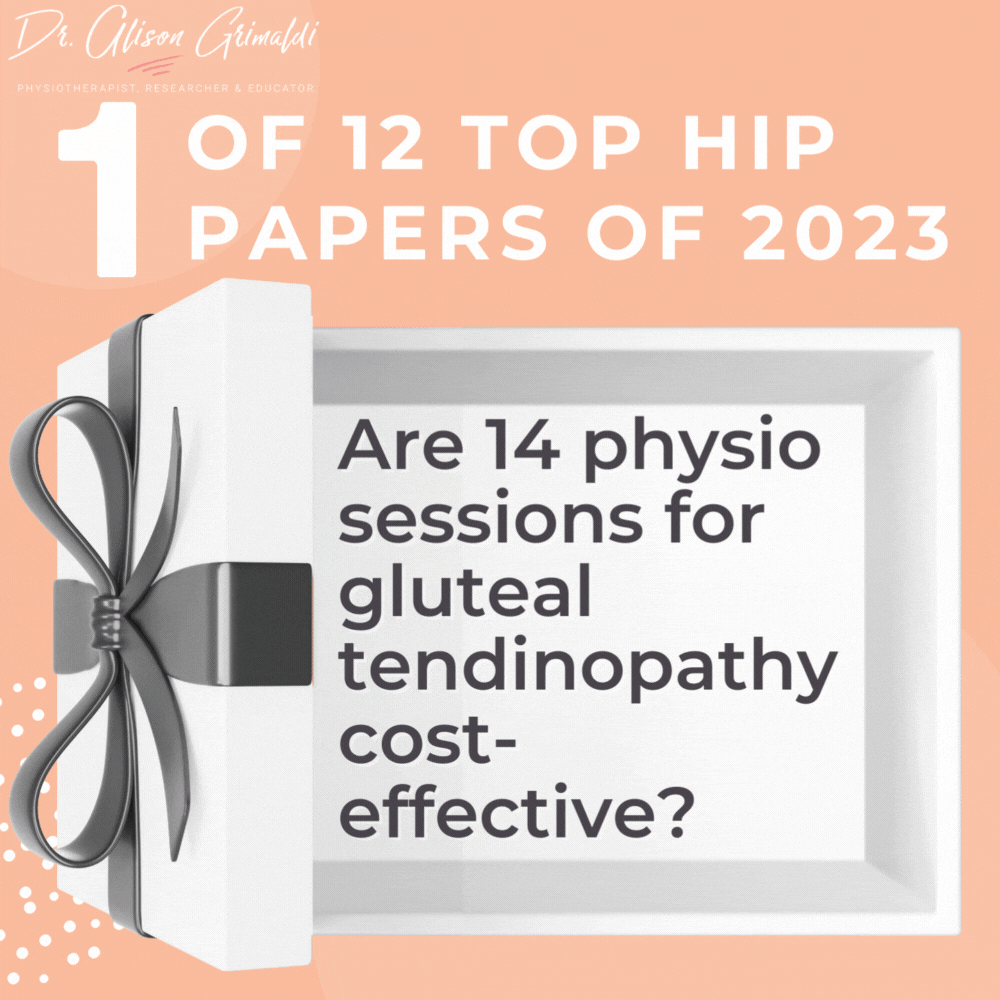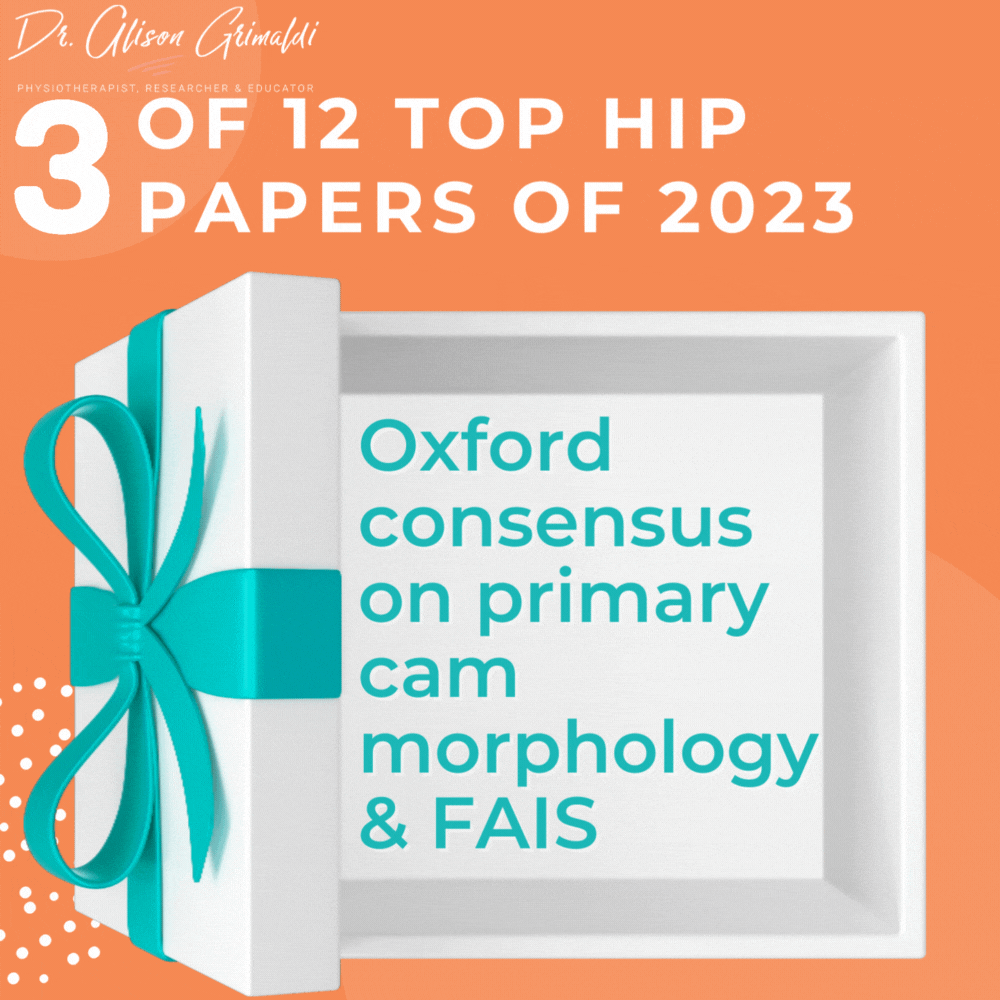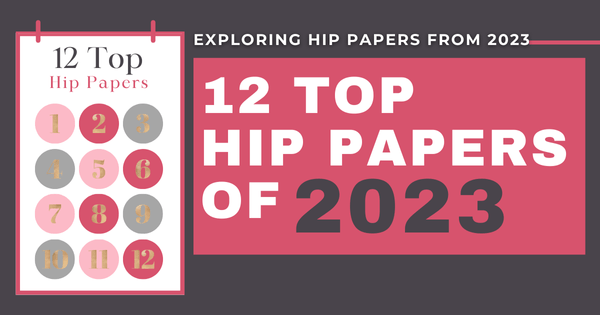2 of 12 Top Hip Papers of 2023 | Gluteus minimus and gait in hip OA

Welcome to day 2 of my 12 Top Hip Papers of 2023 miniblog series. On day 2, we are going to take a look at a new paper this year that explored the relationship between anterior gluteus minimus fatty infiltrate and gait parameters in those with hip osteoarthritis.1

For your convenience, we have also developed this content into a FREE 31-page full colour ebook!
Packed full of 12 Top Hip Papers - peer reviewed scientific papers from 2023, that have contributed to our understanding of hip conditions and/or the assessment or management of hip pain or injury.

2 of 12 Top Hip Papers of 2023 : The relationship between anterior gluteus minimus fatty infiltrate and gait parameters in females with hip osteoarthritis1
Reductions in hip abductor muscle size, quality and strength have been reported previously in patients with hip osteoarthritis, and those undergoing total hip replacement surgery. This provides good rationale for including abductor muscle conditioning exercises in a program for hip osteoarthritis and in rehabilitation following total hip arthroplasty.
Muscle atrophy associated with hip osteoarthritis may be due to pain inhibition, reduced activity levels and antalgic offloading strategies. Gluteus minimus plays an important role in providing support for the hip joint. Functionally distinct areas of this muscle have been identified and function of the gluteus minimus explored in fine wire EMG research. The anterior segment of gluteus minimus has a peak of activity in late stance phase and the posterior segment has its peak of activity in the early loading phase of gait.
In those with hip OA and other forms of joint related pain, we often observe antalgic avoidance of hip extension in late stance phase. So, is there any relationship between gluteus minimus muscle health and gait parameters in those with hip osteoarthritis, and what does that mean for clinical practice?
Study Aim:
- The aims of this study were to measure the fatty infiltration in anterior and
posterior portions of gluteus minimus and to investigate the relationship between walking ability and fatty
infiltration in anterior and posterior gluteus minimus in female patients with the hip osteoarthritis.
What was done:
-
A retrospective analysis of muscle and gait parameters in female participants with moderate to advanced unilateral hip osteoarthritis.
-
Number of participants:135; mean age: 65.9±11 years; mean BMI 24±4
- Muscle density of the anterior and posterior portions of gluteus minimus in females with moderate to advanced hip OA was measured on CT. Lower muscle density on CT reflects greater fatty atrophy.
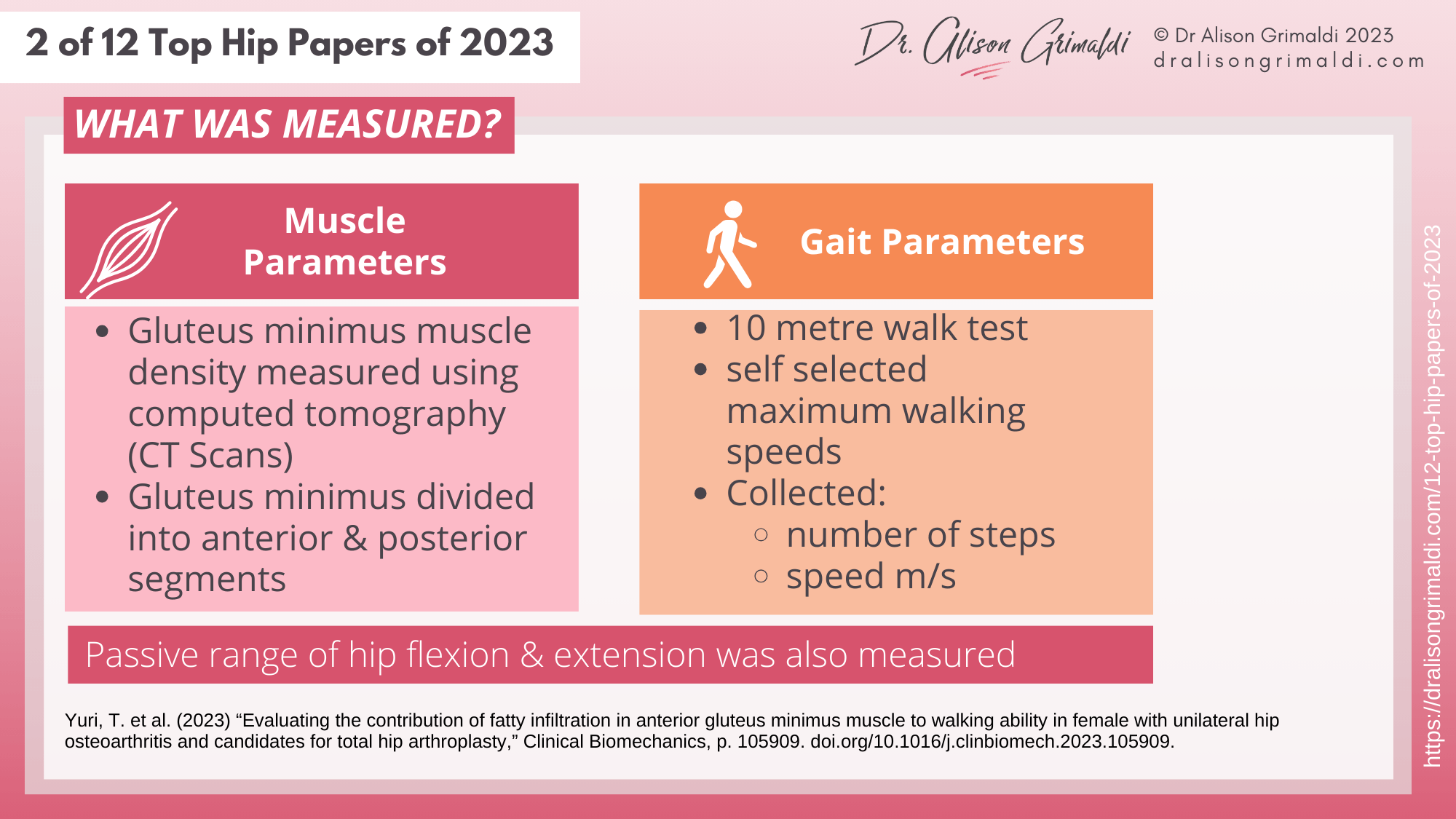
Analyses:
- Gluteus minimus muscle density: anterior versus posterior
- Gluteus minimus muscle density: affected versus unaffected hip
- Multiple regression analysis was performed to assess the relationship between muscle quality and gait parameters such as speed & steps/10m (reflecting stride length).
Key Findings:
- Anterior gluteus minimus density was significantly lower than the posterior gluteus minimus on both sides.
- Density of both anterior and posterior gluteus minimus was lower on the affected side than the unaffected side.
- Muscle density of anterior gluteus minimus on the side with hip osteoarthritis was independently associated with number of steps taken and speed of gait over 10 metres.
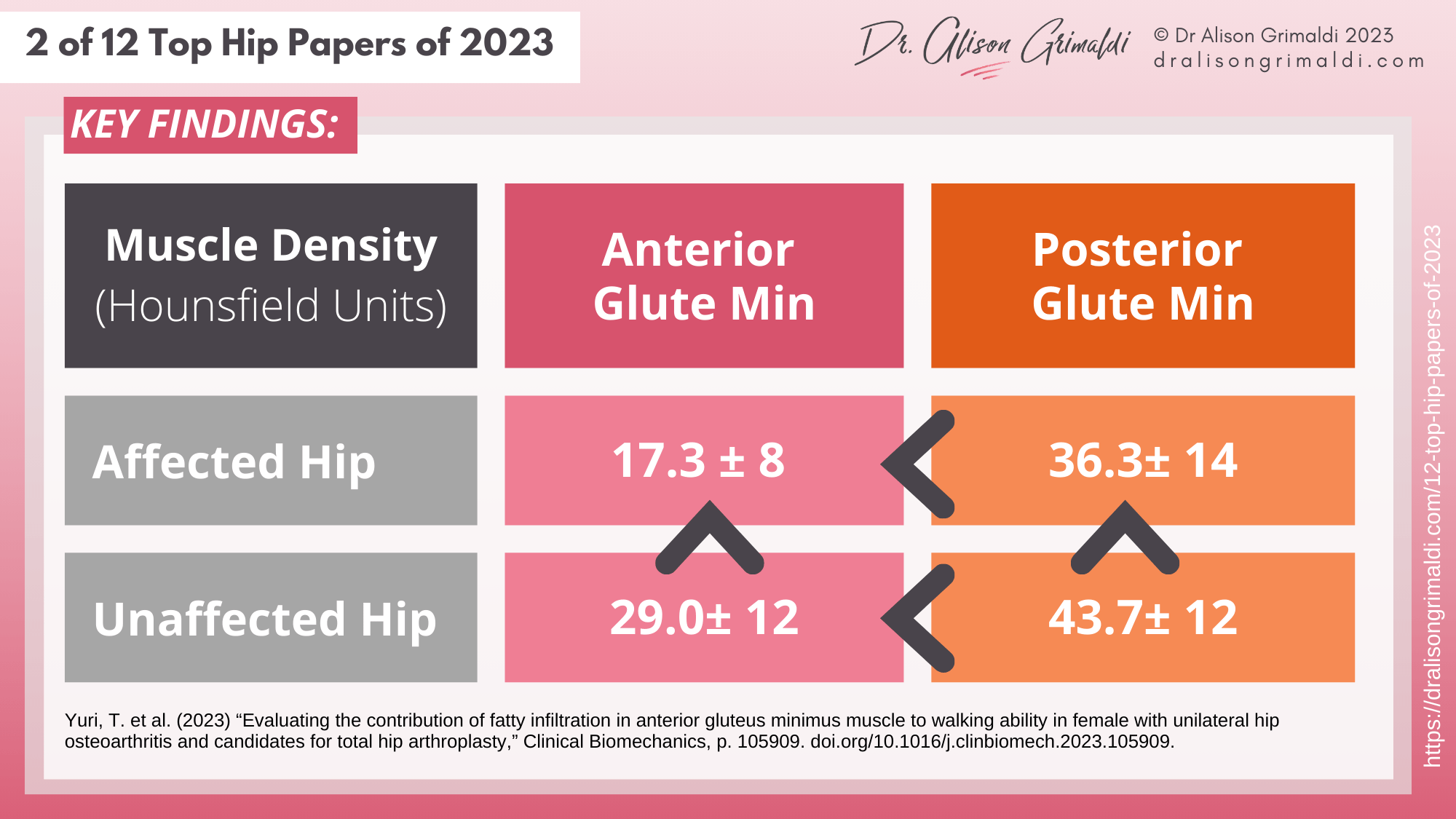
Clinical Implications:
- Walking more slowly with reduced stride length may reduce natural stimulus for the anterior gluteus minimus, which usually has its peak of activity in late stance phase.
- Exercise therapy should address specific deficits in anterior gluteus minimus, but also aim to optimise gait parameters for natural stimulus of this muscle in gait.
Atrophy of anterior gluteus minimus in hip osteoarthritis is related to stride length and speed. Simply asking people to walk fast with long strides is unlikely to be the answer. Rehabilitation may need to address multiple factors e.g., pain, ROM, specific muscle deficits, general physical capacity and confidence.
Like to learn more about managing hip osteoarthritis?
In this course, you can find detailed information on pathoaetiology, assessment and management of hip joint related pain, and many other conditions. To learn more, take the online course, or join me in an online or face-to-face workshop.
This online course is included in Hip Academy and Hip Academy members receive discounts for online workshops.
I hope you enjoyed the infographics and key learnings from Day 2 of my 12 Top Hip Papers of 2023. There are 10 other papers in this series, so use the navigational graphics below, to see what other top papers and infographics I have for you!

Have you heard about Hip Academy?
Enjoy the benefits of a world class educational Hip Program, specifically designed by Dr Alison Grimaldi to help improve your knowledge surrounding the Hip and Pelvis, and become an expert in your field.
With all Hip Courses included, enjoy all the extra inclusions, including; access to the entire eBook series, growing video library, expanding PDF resource centre, regular member meetings, forums + lots more!

